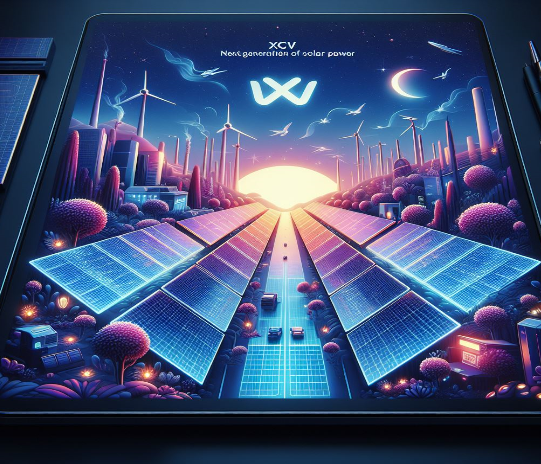XCV Panel: A Closer Look at the Next Generation of Solar Power

Table of Contents
The XCV Panel is making waves in the renewable energy sector, promising increased efficiency and versatility compared to traditional solar panels. But what exactly is it, and how does it work? This paper delves into the features, uses, advantages, substitutes, and installation of XCV panels, helping you understand their potential and limitations.
What Exactly is the Xcv Panel?
Unlike traditional silicon-based solar panels, the XCV Panel utilizes a proprietary technology that combines multiple layers of advanced materials. This construction allows for enhanced light absorption, improved energy conversion efficiency, and greater flexibility compared to conventional panels.
How Does the Xcv Panel Operate?
Light photons enter the panel and are absorbed by different layers, each optimized for specific wavelengths. This multi-layered approach maximizes energy capture across a wider spectrum of sunlight compared to the single-layer design of traditional panels. The captured energy is then converted into electricity through a series of internal processes.
Advantages of Xcv Panels Compared to Conventional Solar Panels
- Higher Efficiency: XCV panels boast higher energy conversion rates, potentially generating more electricity per square meter of panel area.
- Wider Light Absorption: Their multi-layered design captures a broader range of sunlight, including low-angle light and even some shade, leading to increased energy production during non-peak hours.
- Greater Flexibility: Unlike rigid silicon panels, XCV panels are more flexible and lightweight, making them suitable for curved surfaces and diverse installations.
- Improved Durability: The advanced materials used in XCV panels offer better resistance to weather, wear, and tear compared to traditional panels.
Potential Uses of Xcv Panels
- Residential rooftops: Ideal for homeowners seeking maximum energy generation and flexibility in panel placement.
- Commercial buildings: Suitable for large-scale energy production on flat or curved roofs.
- Portable applications: Their lightweight and flexible nature make them perfect for powering mobile structures, vehicles, or remote areas.
- Building-integrated photovoltaics (BIPV): Can be seamlessly integrated into building facades or roofs for aesthetic appeal and energy generation.
Primary Varieties of XCV Panels
- Standard XCV Panel: The core offering, optimized for balance between efficiency and affordability.
- High-Efficiency XCV Panel: Delivers the highest energy conversion rate, ideal for maximizing energy output in limited space.
- Flexible XCV Panel: Designed for curved surfaces and unique installations with its lightweight and flexible construction.
Optimal Installation Methods for Xcv Panels
- Consult a qualified solar installer: Proper installation is crucial for optimal performance and safety.
- Consider roof type and sunlight exposure: Installation methods vary depending on your roof structure and sun exposure patterns.
- Choose the right panel type: Select the XCV panel variant that best suits your specific needs and installation constraints.
Some Limitations of Xcv Panels
- Limited Availability: XCV panels are still a relatively new technology, and their availability might be limited in some regions.
- Higher Cost: Currently, XCV panels might have a higher upfront cost compared to conventional panels.
- Technical Expertise Needed: Installation might require specialized knowledge or tools compared to traditional solar panels.
Determining If the Xcv Panel Suits Your Needs
- Evaluate your energy needs and budget.
- Consider your roof type and installation options.
- Research local availability and installation costs.
- Compare XCV panels to other solar solutions.
Prospects for the Future of XCV Panels
With ongoing research and development, XCV panels have the potential to become a dominant force in the solar energy market. Their efficiency, flexibility, and durability could revolutionize the way we generate and utilize solar power.
Alternatives to XCV Panels
- Traditional silicon solar panels: Still a viable option for many, offering established technology and lower upfront costs.
- Thin-film solar panels: A flexible alternative with lower efficiency but suitable for specific applications.
- Concentrated photovoltaic (CPV) systems: Offer high efficiency but are more complex and require direct sunlight.
FAQ
Are XCV panels safe?
Yes, XCV panels are designed and tested to meet safety standards.
How long do XCV panels last?
They are expected to have a lifespan comparable to traditional solar panels, typically 25-30 years.
Can I install XCV panels myself?
While technically possible, it’s strongly recommended to use a qualified solar installer for optimal performance and safety.
Support Ukraine against russian fascists! Defend Europe from horde! Glory to Ukraine! 🇺🇦

George Brown is a main editor in Bitgraph Network Team.